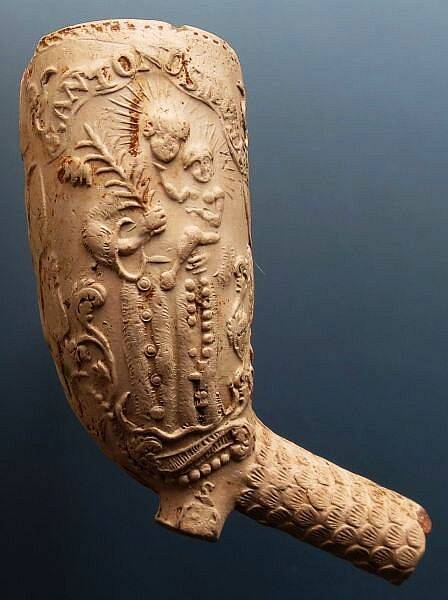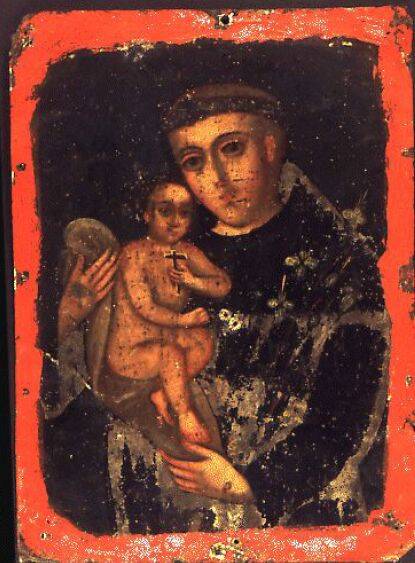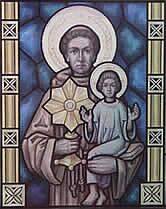Heilige Antonius beste vrind
De Geschiedenis:
Op 13 juni 1195 werd Antonius geboren in Lissabon, Portugal. Hij kwam uit een rijke, adellijke familie en zijn naam bij geboorte was Fernando de Bulhom. In 1212, op zeventienjarige leeftijd, werd hij kanunnik bij de Augustijnerorde. Na de moord op vijf jonge franciscaanse monniken in Marokko door de Mohammedanen, wat een diepe indruk op hem maakte, sloot hij zich in 1220 aan bij de Franciscanen of Minderbroeders (Ordo Fratrum Minorum, afgekort O.F.M.). Hij vertrok naar Noord-Afrika om daar het geloof te verspreiden. Toen hij ernstig ziek werd, verlegde hij zijn werkterrein eerst naar Frankrijk en later naar Italië.

Veel gelovigen vonden door zijn toedoen de weg terug naar het geloof. Ook gaf hij theologielessen aan zijn medebroeders. Nadat hij op veel plaatsen in Frankrijk en Italië had gepredikt, keerde hij in 1227 terug naar Padua. Op 36-jarige leeftijd stierf hij daar en nog geen jaar later werd hij door paus Gregorius IX heilig verklaard. Later, op 16 januari 1946, werd Antonius door paus Pius XII tot kerkleraar verheven. Bij de katholieken werd en wordt Antonius aangeroepen wanneer men iets kwijt is.

Heilige Antonius beste vrind maak dat ik mijn (.......) vind.
Heilige Antonius lieve sint zorg dat ik mijn (........) vind

Hij is de franciscaanse patroonheilige van verloren voorwerpen, vrouwen en kinderen, armen, bakkers, mijnwerkers, het huwelijk, reizigers en verliefden. Hij is ook de franciscaanse patroonheilige tegen pest, koorts en schipbreuk.
Naar hem is de teunisbloem vernoemd, die rond zijn verjaardag op 13 juni in bloei staat. Ook is de gemeente Sint Anthonis in Noord-Brabant naar hem vernoemd.
Vanaf de 17e eeuw wordt de heilige Antonius van Padua vaak afgebeeld met het kindje Jezus, omdat hij volgens een legende in een visioen het kindje Jezus heeft aanschouwd.
1a. Aad Kleijweg
1b. -
2a. Kromkop
2b. De heilige Antonius van Padua met kindje Jezus en lelietak / De heilige Antonius van Padua met kindje Jezus en lelietak
2c. Gouds wapenschild S / Gouds wapenschild S
2d. L gekroond
2e. Ongeglaasd
2f. Gebotterd
2g. Radering rondom de ketelrand
2h. -
3a. Geschubd
3b. Ongeglaasd
3c. -
4. 1753 - 1774
5. Gouda
6. Frans Verzijl
7. [1 Blz. 249 Afb. 879]
Literatuur:
[1] Krommenhoek, W. en A. Vrij, z.j. (1986). Kleipijpen drie eeuwen Nederlandse kleipijpen in foto's. Amstelveen.

Saint Anthony, best friend
The History of Saint Anthony of Padua
Saint Anthony was born on June 13, 1195, in Lisbon, Portugal. He came from a wealthy, noble family, and his birth name was Fernando de Bulhom. In 1212, at the age of seventeen, he became a canon in the Augustinian Order. After the murder of five young Franciscan monks in Morocco by Muslims, which left a deep impression on him, he joined the Franciscans (Order of Friars Minor, O.F.M.) in 1220. He set out for North Africa to spread the faith, but when he became seriously ill, he redirected his mission first to France and later to Italy.
Through his work, many believers found their way back to the faith. He also taught theology to his fellow brothers. After preaching in many places in France and Italy, he returned to Padua in 1227. At the age of 36, he died there, and less than a year later, he was canonized by Pope Gregory IX. Later, on January 16, 1946, Pope Pius XII elevated Anthony to the rank of Doctor of the Church. Among Catholics, Saint Anthony is invoked when something is lost.
He is the Franciscan patron saint of lost items, women and children, the poor, bakers, miners, marriage, travelers, and those in love. He is also invoked as a protector against the plague, fever, and shipwrecks.
The evening primrose (Dutch: teunisbloem), which blooms around his feast day on June 13, was named after him. The municipality of Sint Anthonis in North Brabant, the Netherlands, is also named in his honor.
Since the 17th century, Saint Anthony of Padua has often been depicted with the Child Jesus, because, according to legend, he once saw the Child in a vision.